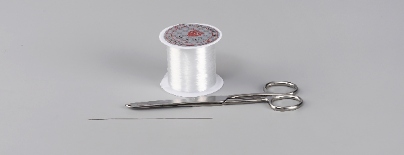Sun, holidays, the colorful sea world... Try out the creative options provided by unique Czech PRECIOSA Twin™ seed beads and create several fish from the underwater world of the coral reef just for fun. Use your free time during the summer holidays for creative work with this oval two-hole seed bead. Preciosa Ornela offers instructions and inspiration for the production of several colorful sea fish. We wish you much summer holiday inspiration with PRECIOSA Twin™ seed beads and all the other types of Czech seed beads.
She is able to switch from luxurious and extravagant fashion show pieces to the preparation of hobby projects,
Learn MoreA thin stringing needle, a line, scissors

Share this project with your friends
This website uses cookies
PRECIOSA ORNELA, a.s. hereby informs you that its website uses cookies You can find more information about our cookies and how your data is processed in the privacy statement. We request your consent to use cookies specified below.